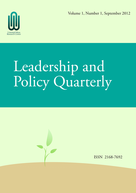


Volume 11 Issues 1-4 (2022-12-31)
Volume 10 Issues 1-4 (2021-12-31)
Volume 9 Issues 1-3 (2020-09-30)
Volume 8 Issues 3&4 (2019-12-31)
Volume 7 Issues 1&2 (2018-06-30)
Volume 6 Issues 3&4 (2017-12-31)
Volume 6 Issues 1&2 (2017-06-30)
Volume 5 Issues 3&4 (2016-12-31)
Volume 5 Issues 1&2 (2016-06-30)
Volume 4 Issues 3&4 (2015-12-31)
Using international data sets from the United Nations Development Program, United Nations Office on Drugs and Crime, and The World Health Organizations this study examines the relationship between the Human Development Index, GINI Index and Gender Inequality Index and national rates of homicide and the reported incidence of domestic violence. Comprehensive data were available for 74 countries from all regions. Homicide rates were found significantly related only to the GINI index of income inequality. A more equal income distribution is significantly related to lower homicide rates. While gender inequality and homicide rates are significantly and positively correlated, the regression analysis shows that the distribution of wealth in a society has more of an impact on homicide rates than male dominant attitudes toward females or the human development value.
This paper presents common educational components and guidelines that influence the quality of online classes in K-12 and higher-education settings with leadership and policy implications for online instruction. We discuss the common features and guidelines teachers need to know to effectively run online classes. The key components for online teaching include clarity, flexibility, autonomy, communication, collaboration, innovation, authenticity, and multimodality. Specific examples of each feature from our own teaching are shared to help teachers who do not have sufficient experience in online teaching. We conclude by summarizing the implications of common online class features for online teachers’ leadership and educational or instructional policy within their own classrooms.